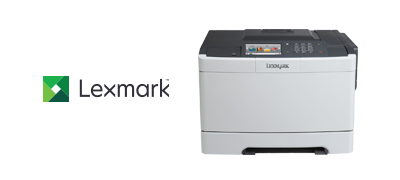October is National Cyber Security Awareness Month. What’s the first thing that pops into your mind when you think of cyber security? I used to think of anti-virus software. Now that I have been with Connection for nearly three years, I think of printers. Printers are commonly the weak link in an organization’s IT infrastructure. Maybe that’s because people think the risk is not pertinent. 37% of companies believe the security risks associated with printers are too small to justify the cost to fix. How would I justify the cost of print security? Well, one significant IT security breach can cost a company hundreds of thousands of dollars and also harm the company’s reputation. 24% of the participants in a recent IDC survey stated that their company had been breached in the last 12 months. Over 16% of these breaches involved printers. “Printers are sophisticated computers connected to your network, and are frequently overlooked when assessing overall security risk,” said Stephen Nardone, Director of Security Practice here at Connection. “Testing for flaws in printer security is critical to the overall security health of your organization, as they are a favorite target for malicious actors when launching an attack. Make sure printer security is a top-of-mind issue.”
Companies must focus on the three levels of print security: device, document, and network. A printer has many attractive points of access that could come under attack. Sensitive information can be left in the tray of a printer and unencrypted documents in motion can be intercepted. Any employees that have access to the company’s network should be familiar with print security processes. When a company successfully implements print security on each of the three levels, it reduces print-related costs, the risk of a security breach, and help desk inquiries pertaining to print equipment. The word is getting out about print security being so beneficial, because 66% of the participants in a recent IDC survey said that security features have a significant influence on what print equipment their company purchases. Connection and its partners—like Brother, Lexmark, and Xerox—can help you close the security gap in printing.
Security is a top priority for Brother, due to the impact that security threats have on businesses. “No matter the company size, security around print and scan devices should be a priority for businesses today. Very often, printing and scanning devices are low on the security priority list. But these devices can be one of the biggest risks to a business,” said Bob Burnett, Director of B2B Solutions at Brother. He went on to add, “The cost of sensitive documents getting into the wrong hands or penalties for noncompliance to regulations can far outweigh the cost and effort to secure printing and scanning devices. At Brother, we offer triple layer security solutions that control who has access to a device and what a user can do after they have access, secure document workflows and formats along with robust network security protocols and tracking for protecting the device on the network. It is important to review the security capabilities of print and scan devices on the network and tailor the proper solutions and devices to comply with the unique security schema needs of each business.”
The Brother HL-L5200DW offers a number of advanced security features to address the print security threats that businesses need to take seriously.
Security is also a priority for Xerox. Their ConnectKey Technology ensures protection for all points of vulnerability and offers intrusion prevention, device detection, and document protection. “While many organizations have policies and procedures in place for malware, attacks, data leakages, and cloud computing, many still overlook print infrastructure security—and that’s a big mistake. Print breaches are real, and they happen every day. Xerox® VersaLink® Multifunction Printers are enabled with Xerox® ConnectKey® Technology, which means that each one comes equipped with built-in security features to help you keep your printers secure from both external and internal threats,” said Zia Masoom, Worldwide Product Marketing Manager for Xerox. “By using key cards, passwords, or mobile devices for authentication control, organizations restrict access only to authorized users. All documents sent to, from, and stored on the printer are encrypted, while the printer’s firmware is digitally signed and encrypted to prevent unauthorized changes. And they integrate with Cisco Identity Services Engine for managing security risks on the network.”
The Xerox VersaLink C405/DN color multifunction printer is one example of a Xerox printer enabled with ConnectKey Technology that can securely print, scan, fax, and copy.
Lexmark’s approach to print security addresses the full spectrum of threats in business environments. When it comes to security, Lexmark knows that if your print infrastructure is a low priority, you could be in trouble. “If you delay making print security a high priority for your organization it could end in disaster. Every day you have outdated print devices without the necessary security features, it increases the odds of a security breach. Lexmark can help you bridge the gap between the document, the device, the network, and all points in between to reduce the risk of a security incident” said Tim Field, Territory Sales Manager at Lexmark.
In 2017, IDC MarketScape named Lexmark a leader in security solutions and services hardcopy because of products like Lexmark’s CS510de color laser printer. CS510de lets you enjoy enterprise-level security, fast output, and less hassle.
In short, don’t underestimate how vulnerable a printer can be. Connection and its partners are here to help you optimize your IT Infrastructure and secure your print environment. We will work with you to make sure all of your bases are covered. The last thing Connection wants is for you to have an IT security breach that could have been avoided. Let’s solve IT together.




